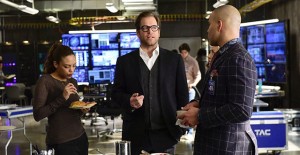Source of article DOAR Litigation Consulting.

In the thirteenth edition of his weekly column in Law360, DOAR’s real-life New York City Jury Consultant and Psychologist reviews the fictional NYC Jury Consultant/Psychologist on the television series “Bull,” focusing on what litigation is really like in the trenches.
This episode was calm, even sedate, and featured an actually sympathetic three-dimensional defendant. The jury consulting techniques were close to realistic and sophisticated. Not a single felony was committed by anyone on Bull’s staff. All is forgiven! This affords us an opportunity, much requested by our far-flung readers ranging from the CEO of DOAR, to the president of DOAR, all the way to the chief technology officer of DOAR, to delve into the portrayal of the jury consulting on the show and compare it to what is done in real life (aka, the mission statement of this column) — otherwise known as “Can you do less of the artsy aesthetic criticism and actually talk about jury consulting for once?” So this week, we will have a bit less discussion of whether we are meaningless flotsam in a multiverse and how contradictory it seems that Socrates believed in the Oracle at Delphi and will instead productively riff on the episode’s depiction of jury consulting technique. Warning: There may be an educational component (completely devoid of CLE credit!). The Case of the Tremulous Gamer In this episode, a young professional videogame player loses a big match and is publicly defamed and fired by his coach. The gamer has his lawyer hire Bull in a trial against the coach. The attractive lawyer, of course, has the boilerplate sexually charged (wake me when this sentence is over) banter with Bull about who is in charge. Meanwhile, the gamer is shown on two separate occasions having neurological symptoms, which is surprisingly followed by the climactic revelation that he has a neurological problem. Bull then uses this diagnosis to make a settlement offer along the lines of “the jury is going to pay jillions when they learn he has Parkinson’s.” Other characters drift in and out of the episode and have various briefly defined relationships with each other, people go up and down the stairs at 60 Centre Street, some plot happens … Bull’s offer is accepted, so he wins again. Rather than getting someone jailed in the last minute of the show as he usually does, Bull somehow just gets the gamer’s teammate fired for coincidentally trying to throw the game at the same time the original event occurred. (Perhaps I missed something during a postictal period here.) But in the midst of this, there is an actual interesting discussion of jury selection strategy (alongside the usual ridiculous mirror jury stuff in which people are matched down to “I love to listen to heavy metal music!”). Is That What Jury Consulting is Like? We got to this section so quickly! In this episode, the judge states that he will be using a blind strike voir dire format in which each side makes all of their strikes on paper simultaneously so that they do not see who the other side is striking. This leads to an interesting discussion of how to use strategy to figure out who the other side is likely to strike so that one does not waste a strike and yet still ensures that one’s unfavorable people get struck. Using the Other Side’s Peremptory Strikes Even when the strikes are done more typically, this high-level strategic thinking comes into play by jury consultants who spend far too much time thinking about voir dire strategy. It is the dream of every jury consultant to figure out how to get the opposing side to strike your own unfavorable jurors so that one then has the effect of having additional strikes in one’s quiver. This difficult effect can be accomplished by manipulating the information flow in voir dire to guide the opposing counsel’s decision-making in three steps. (Opposing counsel, please stop reading.) First, in advance of the trial, one calculates the opposing side’s optimal jury selection strategy to figure out what information they would need to make their decisions. Second, at trial, one reads into the opposing attorney’s voir dire questioning to get more information on their decision-making process and what information they are trying to expose. Third, one adjusts one’s voir dire questioning based on this information to bait opposing counsel to strike your own unfavorable jurors by having your unfavorable jurors speak about topics that would be more unfavorable to the other side so that they will be struck by the opposing counsel. For more information about the thinking behind how to use the other side’s strikes, see some guy’s technical guidance here. So now go win a case, for once. Don’t worry. Next week, we regress to the mean with flat-out snotty aesthetic criticism with too many parenthetical tangents into philosophy and the cosmos. The post Talking Bull, Episode Thirteen, A Real Jury Consultant Watches a Fictional One appeared first on DOAR.

